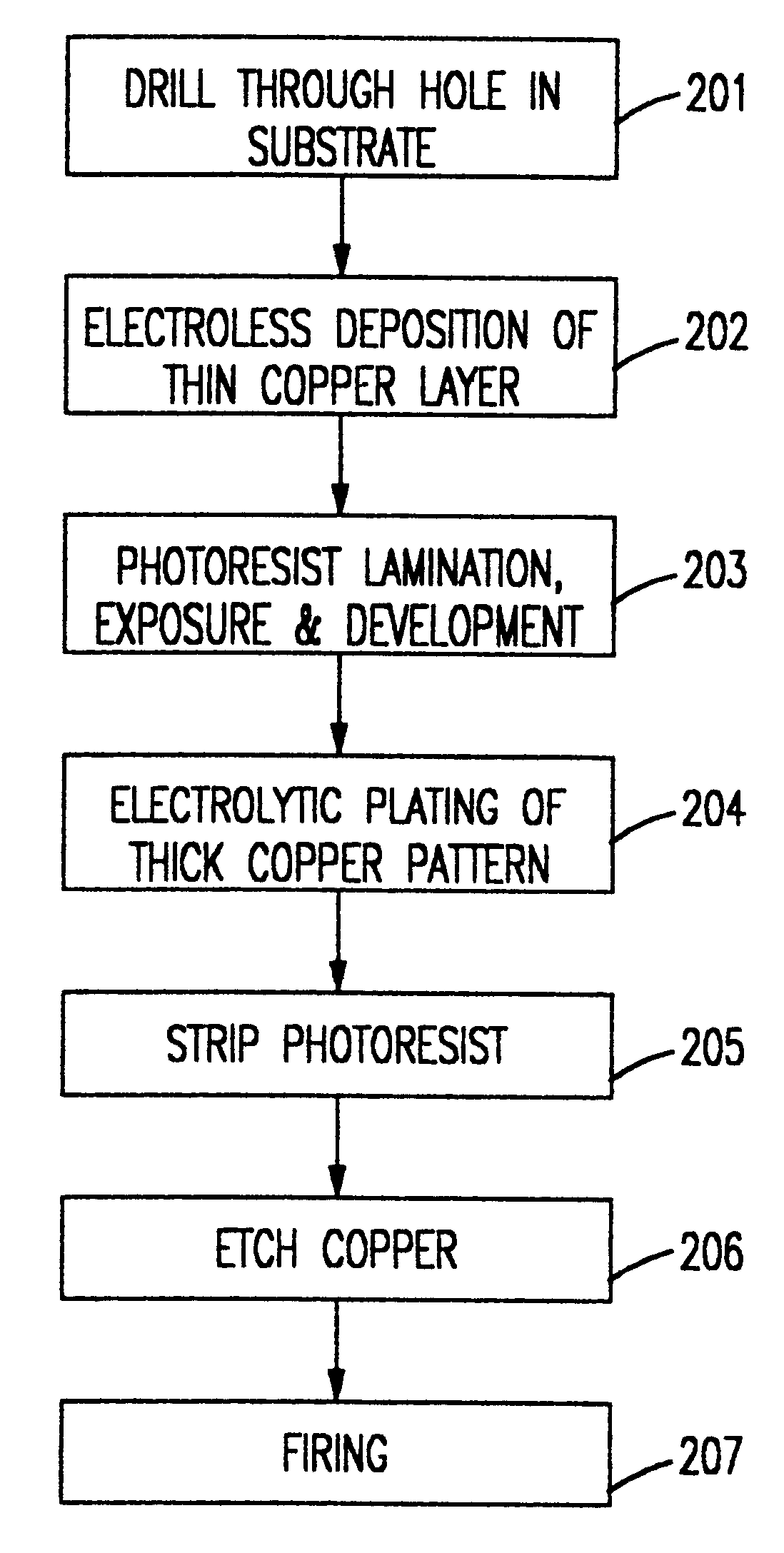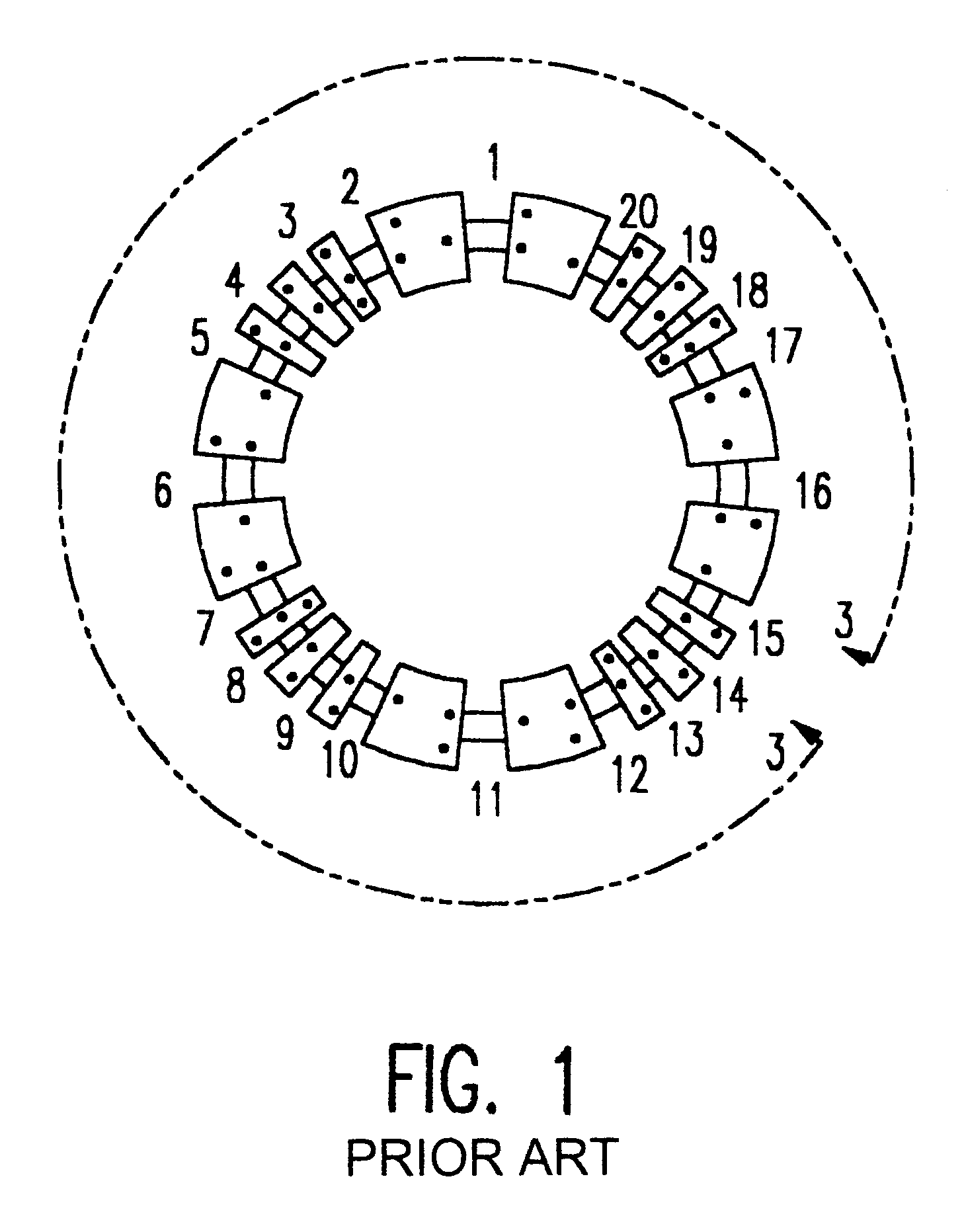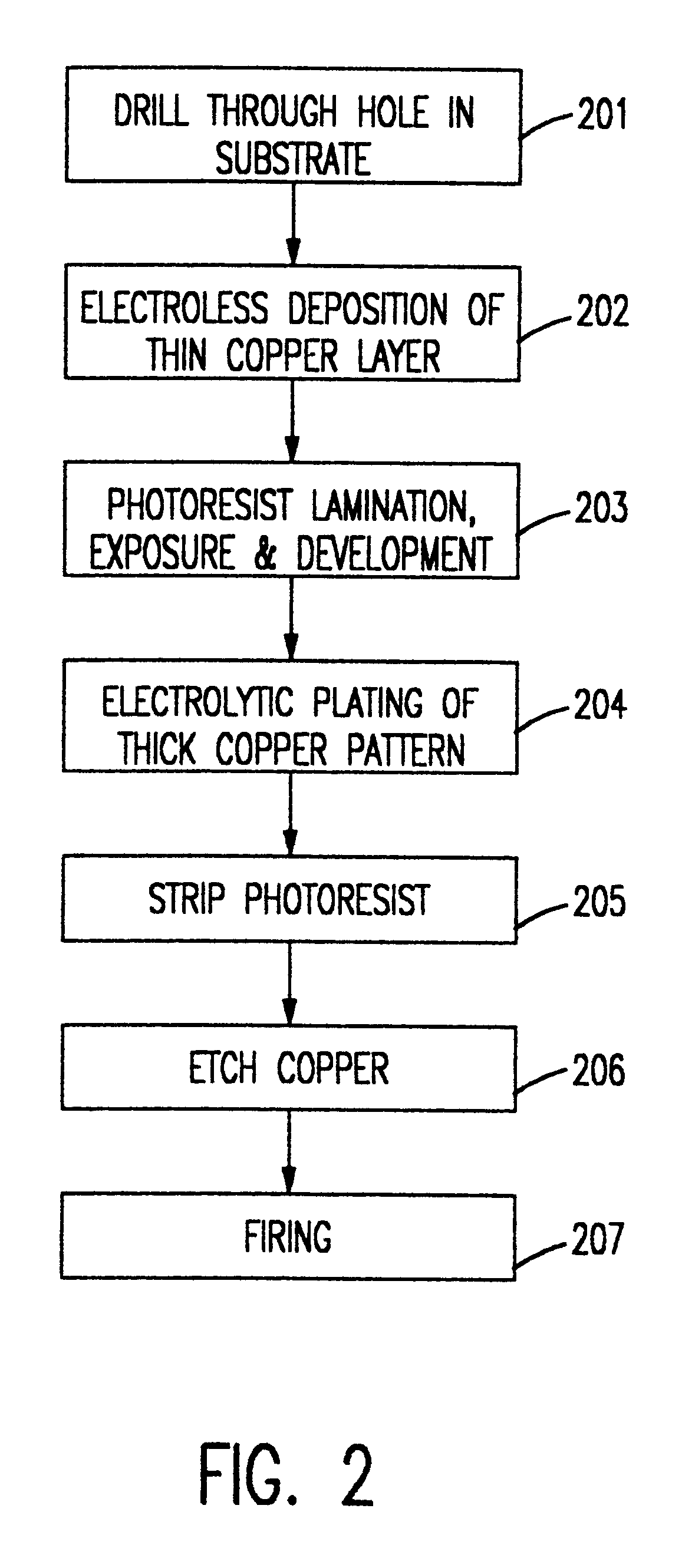Simplified fabrication method of toroidal charged particle deflector vanes
a fabrication method and technology of toroidal charge, applied in the manufacture of electrode systems, resistive material coating, electric discharge tubes/lamps, etc., can solve the problems of difficulty and time involved in winding the form to make the coils
- Summary
- Abstract
- Description
- Claims
- Application Information
AI Technical Summary
Benefits of technology
Problems solved by technology
Method used
Image
Examples
Embodiment Construction
Referring now to the drawings, and specifically to FIG. 2, a flowchart is provided for the present process. Beginning with step 201, a through hole 400 is drilled through substrate 303, which provides an electrical connection between coil patterns 301 and 302. Drilling is preferably done in either the conventional manner or by laser action. The substrate 303 preferably has a low coefficient of thermal expansion (CTE). For example, in a preferred embodiment, any particular ceramic can be used that has a CTE of approximately 7.times.10.sup.-6 / .degree. C. Other wires and substrates may also be used with the present invention, depending on the particular application. For example, Zerodur.RTM., produced by Schott Glaswerke (Mainz, Germany) may also be used as a substrate.
At step 202, a thin layer of copper 401 is deposited over the entire surface of the substrate 303 and in the through hole 400 by electroless deposition. This step is necessary to create a conductive layer on the substra...
PUM
| Property | Measurement | Unit |
|---|---|---|
| thickness | aaaaa | aaaaa |
| thickness | aaaaa | aaaaa |
| temperature | aaaaa | aaaaa |
Abstract
Description
Claims
Application Information
 Login to View More
Login to View More - R&D
- Intellectual Property
- Life Sciences
- Materials
- Tech Scout
- Unparalleled Data Quality
- Higher Quality Content
- 60% Fewer Hallucinations
Browse by: Latest US Patents, China's latest patents, Technical Efficacy Thesaurus, Application Domain, Technology Topic, Popular Technical Reports.
© 2025 PatSnap. All rights reserved.Legal|Privacy policy|Modern Slavery Act Transparency Statement|Sitemap|About US| Contact US: help@patsnap.com



